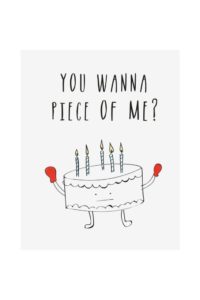“This $6 bottle of wine tastes awful.” “What did you expect – you get what you pay for.”
It’s true, in most circumstances, that the quality of products and services increases as the price increases. You get what you pay for. When you cheap out on something, be it a bottle of wine, pair of jeans, or a manicure, more often than not you’ll end up disappointed. You might even end up paying more in the long run, having to replace the item or fix the mess you made when you cheaped out the first time.
One of the most common examples is with clothing. In this age of fast-fashion it’s not unheard of to find a t-shirt, pants, and a pair of sneakers – all of it – for less than $20. Anyone who’s ever shopped at Old Navy or Walmart can attest to this. But then what happens? The thin material starts to unravel, it’s improperly stitched, and it quickly wears out. Or, just as likely, it just doesn’t fit properly in the first place and so you never wear it.
I hate the term ‘investment’ when it comes to something that doesn’t have the potential to earn you money, but ‘investing’ in more expensive clothes can pay off. A well-cut suit, a timeless pair of shoes, work-out gear that doesn’t fray or pill after a few washes. Most of us can agree that spending more on a high quality item that will last a long time is worth the money.
Do you always get what you pay for?
But higher price = better product/service doesn’t always hold true. Take investing, for example. It’s widely accepted now that cost is the only reliable predictor of future returns. The higher the cost, the lower the expected return. The reverse is also true.
Canadian investors pay some of the highest mutual fund fees in the world and so it stands to reason that our expected returns will also diminish. We’re not getting what we pay for: our advisors get paid and investors get short-changed.
Yet I’ve heard advisors use this argument – you get what you pay for – when trying to persuade their clients that low-cost indexing, or a robo-advisor, is an inferior solution to their actively managed model. Ridiculous!
Here are some other, hopefully, less controversial examples from my own personal experience where a higher price doesn’t always mean better quality.
Wine
The first time I took my girlfriend (now wife) out to dinner I ordered a bottle of Dr. Zenzen, thinking I was the most sophisticated man in the world. My wine palate has evolved since then, moving beyond the sickeningly sweet white zinfandels and moscatos to the more complex, structured, and powerful pinots, syrahs, and cabs.
I tried to go down the wine-snob road before, but then quickly realized that the bottles I enjoyed most landed somewhere in the $20 price-range. I can appreciate a good bottle of wine, but why spend $60 to $100 on a fancy bottle when I get the same amount of joy sharing an $18 bottle with my wife on a Saturday evening?
There are some great bottles of wine under $20 and it’s my mission in life to find them all.
Coffee
I’m not a latte guy. Plain, black coffee for me. I do like a good cup of joe, but it pains me to pay a premium at a coffee shop when I don’t even get to see the barista make coffee art in my medium dark-roast, black.
We don’t grind our own beans, we don’t own a french press. We literally buy a can of west-coast blend dark roast coffee from Safeway or No Frills ($11.99 for 910 grams). Compare that with Kona Coffee, tabbed as “one of the world’s most sought-after beans by coffee connoisseurs.” It retails for $13.99 for a seven-ounce bag. That’s more than 5 times the cost of my no-name coffee!
I’ve had a cup of Kona – it’s not 5 times better – believe me. Maybe my heathen palate cannot discern the rich difference between the $50/pound Kona coffee and my regular west-coast blend, but I’ll take my plain old coffee and pocket the difference.
Birthday cards
 Maybe it’s because our kids go to so many birthday parties these days, but I’ve always loathed paying $5 or more for a birthday card (especially when you forget to buy a gift and you’re late for the party and so you stop by Toys R Us to get some lego but then remember you MUST get a card or you’ll be thrown out of the party so you’re forced to spend $7 on a birthday card from the toy store).
Maybe it’s because our kids go to so many birthday parties these days, but I’ve always loathed paying $5 or more for a birthday card (especially when you forget to buy a gift and you’re late for the party and so you stop by Toys R Us to get some lego but then remember you MUST get a card or you’ll be thrown out of the party so you’re forced to spend $7 on a birthday card from the toy store).
Enter the Dollar Store. Folks, if you’re not buying your birthday cards at the Dollar Store you’re missing out. Cards there cost $1. They have the same lame jokes and sappy sentiment that the other Hallmark cards have at grocery stores and drug stores, but they cost $1 instead of $7.
Just peel the little Dollar Store sticker off the back and nobody’s the wiser.
Final thoughts
You get what you pay for. It’s true in most cases, but not always. I’m happy to pay more for a higher quality item out of which I’ll get a lot of use. Replacing a cheap item, or fixing a crappy job that wasn’t done right in the first place will cost you more in the long run.
When we renovated our basement we hired a contractor who was recommended to us by our home builder. He was just a guy who knew some tradespeople: not an experienced contracting company with lots of resources. His quote was not cheap, but reasonable; however, the job took twice as long as it should have and we had quite a few problems with the work. Including the fact that he never completed some of the final details … he just disappeared.
Your Turn: Do you always get what you pay for? What are some instances where high price doesn’t necessarily mean best quality?
 In addition to running the Boomer & Echo website, Robb Engen is a fee-only financial planner. This article originally ran on his site on Aug. 13th, 2017 and is republished here with his permission.
In addition to running the Boomer & Echo website, Robb Engen is a fee-only financial planner. This article originally ran on his site on Aug. 13th, 2017 and is republished here with his permission.


